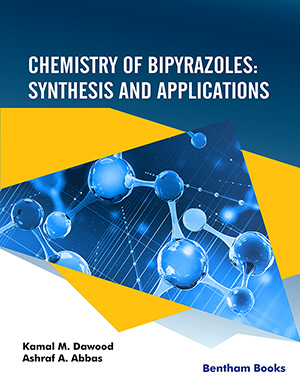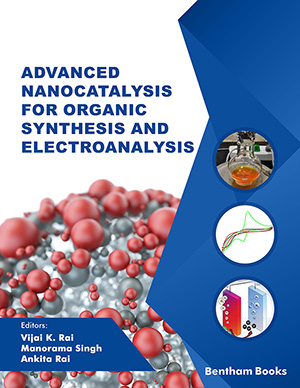
Abstract
Further to a previous contribution to this journal (Kinghorn et al., Curr. Org. Chem. 1998, 2, 597), in the present review we describe a continuation of efforts to obtain novel potential cancer chemopreventive agents from mainly edible plants using selected in vitro bioassays to monitor chromatographic fractionation. Altogether, 52 further active compounds have been isolated from eight plant acquisitions, of which 19 are new natural products. Members of a total of eleven plant secondary metabolite classes have been isolated and characterized, namely, benzofuranoids, ceramides, flavonoids, lignans, a phenol, a porphyrin, sesquiterpenoids, stilbenoids, a stilbenolignan, triterpenoids, and withanolides. Several of these in vitro- active compounds have been found to be active in a follow-up mouse mammary organ culture model, and a number have been selected for more advanced biological testing. Examples include the withanolide, ixocarpalactone A, from the aerial parts of Physalis philadelphica, which has shown promising activity in a quinone reductase induction assay, and four flavonoid constituents from the whole plants of Broussonetia papyrifera, with potent aromatase inhibitory activity.
Keywords: Cancer, Chemopreventive, Fractionation, chromatographic, aromatase
Current Organic Chemistry
Title: Cancer Chemopreventive Agents Discovered by Activity-Guided Fractionation: An Update
Volume: 7 Issue: 3
Author(s): A. D. Kinghorn, B.- N. Su, D. Lee, J.- Q. Gu and J. M. Pezzuto
Affiliation:
Keywords: Cancer, Chemopreventive, Fractionation, chromatographic, aromatase
Abstract: Further to a previous contribution to this journal (Kinghorn et al., Curr. Org. Chem. 1998, 2, 597), in the present review we describe a continuation of efforts to obtain novel potential cancer chemopreventive agents from mainly edible plants using selected in vitro bioassays to monitor chromatographic fractionation. Altogether, 52 further active compounds have been isolated from eight plant acquisitions, of which 19 are new natural products. Members of a total of eleven plant secondary metabolite classes have been isolated and characterized, namely, benzofuranoids, ceramides, flavonoids, lignans, a phenol, a porphyrin, sesquiterpenoids, stilbenoids, a stilbenolignan, triterpenoids, and withanolides. Several of these in vitro- active compounds have been found to be active in a follow-up mouse mammary organ culture model, and a number have been selected for more advanced biological testing. Examples include the withanolide, ixocarpalactone A, from the aerial parts of Physalis philadelphica, which has shown promising activity in a quinone reductase induction assay, and four flavonoid constituents from the whole plants of Broussonetia papyrifera, with potent aromatase inhibitory activity.
Export Options
About this article
Cite this article as:
Kinghorn D. A., Su N. B.-, Lee D., Gu Q. J.- and Pezzuto M. J., Cancer Chemopreventive Agents Discovered by Activity-Guided Fractionation: An Update, Current Organic Chemistry 2003; 7 (3) . https://dx.doi.org/10.2174/1385272033373003
| DOI https://dx.doi.org/10.2174/1385272033373003 |
Print ISSN 1385-2728 |
| Publisher Name Bentham Science Publisher |
Online ISSN 1875-5348 |
Call for Papers in Thematic Issues
Advances of Heterocyclic Chemistry with Pesticide Activity
Global food safety and security will continue to be a global concern for the next 50 years and beyond. Plant diseases have had a significant impact on food safety and security throughout the entire food chain, from primary production to consumption. While conventional chemical pesticides have been traditionally used for ...read more
Carbohydrates conversion in biofuels and bioproducts
Biomass pretreatment, hydrolysis, and saccharification of carbohydrates, and sugars bioconversion in biofuels and bioproducts within a biorefinery framework. Carbohydrates derived from woody biomass, agricultural wastes, algae, sewage sludge, or any other lignocellulosic feedstock are included in this issue. Simulation, techno-economic analysis, and life cycle analysis of a biorefinery process are ...read more
Catalytic C-H bond activation as a tool for functionalization of heterocycles
The major topic is the functionalization of heterocycles through catalyzed C-H bond activation. The strategies based on C-H activation not only provide straightforward formation of C-C or C-X bonds but, more importantly, allow for the avoidance of pre-functionalization of one or two of the cross-coupling partners. The beneficial impact of ...read more
Cutting-edge technology for the development of electrochemical sensors
Electrochemistry based point of care diagnostics is a powerful tool which can revolutionize the current concept of personalize health care industry. There have been several efforts to amalgamate cutting edge technologies (nanotechnology, surface technology, anti-biofouling strategies) while developing assays. The success of each electrochemical sensor is very dependable upon how ...read more
Related Journals
 10
10
- Author Guidelines
- Graphical Abstracts
- Fabricating and Stating False Information
- Research Misconduct
- Post Publication Discussions and Corrections
- Publishing Ethics and Rectitude
- Increase Visibility of Your Article
- Archiving Policies
- Peer Review Workflow
- Order Your Article Before Print
- Promote Your Article
- Manuscript Transfer Facility
- Editorial Policies
- Allegations from Whistleblowers
- Announcements
Related Articles
-
Molecular Imaging of Breast Cancer: Role of RGD Peptides
Mini-Reviews in Medicinal Chemistry Anticancer Chemodiversity of Ranunculaceae Medicinal Plants: Molecular Mechanisms and Functions
Current Genomics Biological Ageing, Inflammation and Nutrition: How Might They Impact on Systemic Sclerosis?
Current Aging Science Signal Transduction Therapy with Rationally Designed Kinase Inhibitors
Current Signal Transduction Therapy Chemical Intuition in Drug Design and Discovery
Current Topics in Medicinal Chemistry c-Myc and Downstream Targets in the Pathogenesis and Treatment of Cancer
Recent Patents on Anti-Cancer Drug Discovery Novel Agents Targeting Nitric Oxide
Current Vascular Pharmacology PLA2 Mediated Arachidonate Free Radicals: PLA2 Inhibition and Neutralization of Free Radicals by Anti-Oxidants – A New Role as Anti-Inflammatory Molecule
Current Topics in Medicinal Chemistry Cancer Therapy: Targeting Mitochondria and other Sub-cellular Organelles
Current Pharmaceutical Design The Tumor Suppressor p53 Regulates c-Maf and Prox-1 to Control Lens Differentiation
Current Molecular Medicine Inhibitors of the 5-Lipoxygenase Pathway in Atherosclerosis
Current Pharmaceutical Design Heat Shock Proteins in Diabetes and Wound Healing
Current Protein & Peptide Science microRNAs in Cardiovascular Disease: Small Molecules but Big Roles
Current Topics in Medicinal Chemistry Resisting the Sun with Vitamin D
Immunology, Endocrine & Metabolic Agents in Medicinal Chemistry (Discontinued) Exploiting Microglial Functions for the Treatment of Glioblastoma
Current Cancer Drug Targets The Hippocampal Autophagic Machinery is Depressed in the Absence of the Circadian Clock Protein PER1 that may Lead to Vulnerability During Cerebral Ischemia
Current Neurovascular Research Selective Serotonin-norepinephrine Re-uptake Inhibition Limits Renovas-cular-hypertension Induced Cognitive Impairment, Endothelial Dysfunction, and Oxidative Stress Injury
Current Neurovascular Research Adeno-associated Viral Vectors for Correction of Inborn Errors of Metabolism: Progressing Towards Clinical Application
Current Pharmaceutical Design Targeting Nrf2 in Protection Against Renal Disease
Current Medicinal Chemistry Adverse HBOC-Endothelial Dysfunction Synergism: A Possible Contributor to Adverse Clinical Outcomes?
Current Drug Discovery Technologies
























